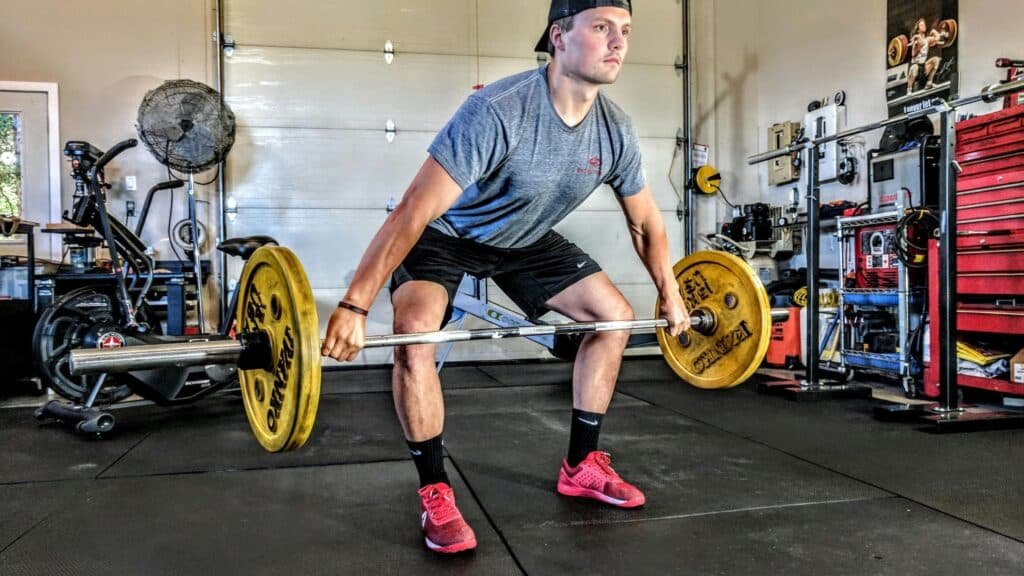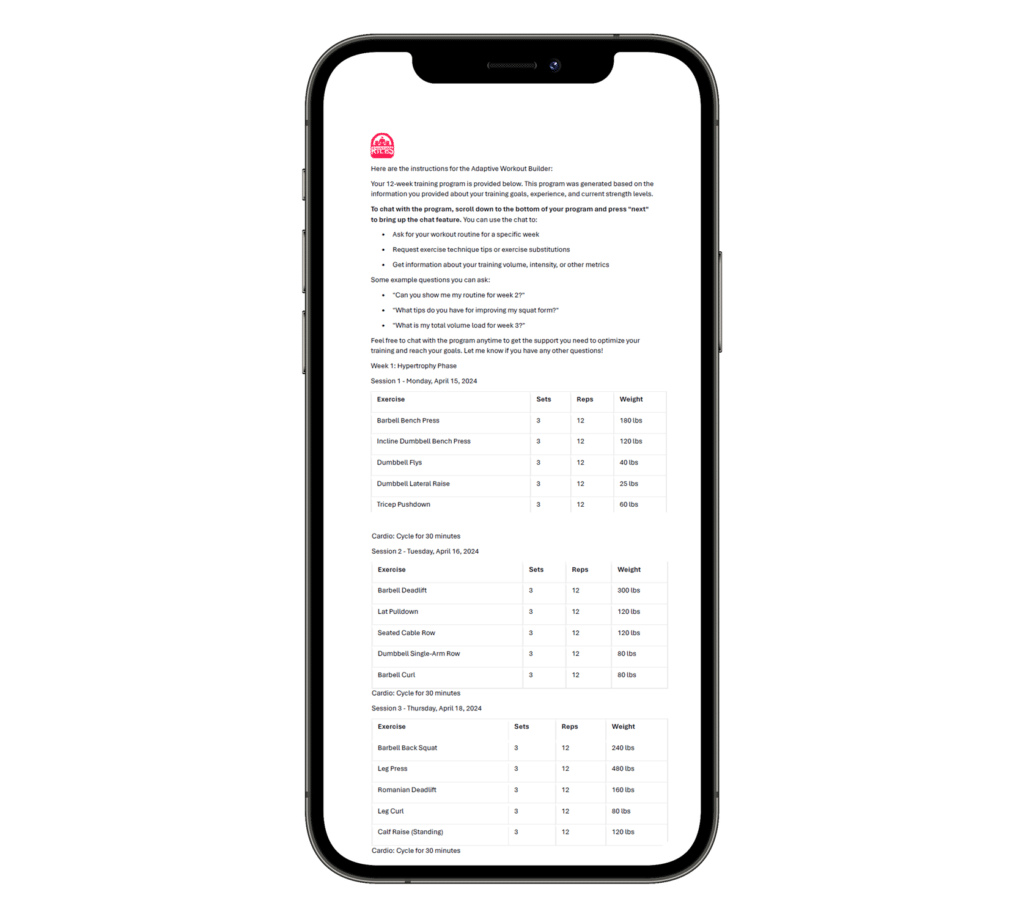Building muscle is a common goal for many fitness enthusiasts, but with so much information available, it can be challenging to know where to start. The internet is flooded with countless articles, videos, and social media posts, each claiming to have the “secret” to building muscle quickly. However, the truth is that building muscle requires a solid understanding of the fundamental principles of resistance training, consistency, and patience. One of the most crucial aspects of any muscle-building program is understanding the role of sets and reps.
In this comprehensive guide, we’ll dive deep into the world of sets and reps, exploring how they contribute to muscle growth and help you achieve your desired physique. We’ll break down the science behind muscle hypertrophy, discuss the optimal rep ranges for various goals, and provide you with actionable advice to design the most effective workout plan tailored to your needs. Whether you’re a beginner just starting your fitness journey or an experienced lifter looking to fine-tune your approach, this guide will equip you with the knowledge and tools necessary to maximize your muscle-building potential.
Table of contents
- Understanding the Basics
- Rep Ranges for Specific Goals
- Determining the Optimal Number of Sets per Exercise
- Is There a Limit to the Amount of Sets that Should be Performed?
- Progressive Overload: The Key to Continuous Muscle Growth
- The Lae of Accommodation: Avoiding Plateaus in Muscle Growth
- Adaptive Workout Builder
- Conclusion

Understanding the Basics
What are reps? A rep, short for repetition, is a single complete motion of an exercise, including the lifting portion (concentric) and the lowering portion (eccentric). For example, one squat, one bench press, or one bicep curl counts as a single rep.
What are sets? A set is a group of consecutive repetitions performed without rest. For instance, if you perform 10 squats in a row without stopping, you’ve completed one set of 10 reps.
The relationship between sets, reps, and muscle growth
The number of sets and reps you perform in your workouts directly influences the type of muscle growth (fitness characteristic) you experience. Different rep ranges target different aspects of muscle development, such as endurance, size, strength, and power.

Rep Ranges for Specific Goals
Muscular Endurance
Muscular endurance refers to your muscles’ ability to perform a task repeatedly without fatigue. Training for endurance is crucial for athletes participating in sports that require sustained performance, such as long-distance running or swimming.
Recommended rep range: 12+ reps per set. To improve muscular endurance, focus on performing high-rep sets, typically 12 or more reps per set. Use lighter weights that allow you to maintain proper form throughout the entire set. Rest time can also be important. Between sets, try to limit your rest time to 30 seconds to 1 minute.
Muscle Size (Hypertrophy)
Hypertrophy is the scientific term for an increase in muscle size. If your primary goal is to build larger, more defined muscles, this is the rep range you should target.
Recommended rep range: 6-12 reps per set. For optimal muscle growth, aim to perform 6-12 reps per set. Choose a weight that challenges you but allows you to maintain proper form throughout the set. Typically, the weight we choose to build muscle hypertrophy is anywhere from 60 – 85% of your 1 repetition max (1RM). If you don’t know your 1 RM, choose a challenging weight to where you are close to failing on your last set (i.e., the last few reps should be difficult).
Strength and Power
Strength refers to your muscles’ ability to generate maximum force, while power is the ability to generate that force quickly. Training for strength and power is essential for athletes in explosive sports, such as sprinting, jumping, and weightlifting.
Recommended rep range: 1-5 reps per set. To develop strength and power, focus on performing low-rep sets, typically 1-5 reps per set. Use heavy weights that challenge you but allow you to maintain proper form. Rest periods between sets should be longer, around 2-5 minutes, to allow for adequate recovery.

Determining the Optimal Number of Sets per Exercise
Now that you have an understanding of what sets and reps are let’s break down how many sets you should be performing per exercise. To answer this question, we’ll examine a study conducted by Dr. Brad Schoenfeld and his colleagues, which investigated the dose-response relationship between the number of sets and repetitions and their effects on muscle size and strength.
Study Design to Understand the Optimal Number of Sets
In this study, three groups of young, resistance-trained males were assigned to perform the following exercises three days per week:
- Flat barbell bench press
- Barbell military press
- Wide grip lateral pulldown
- Seated cable row
- Barbell back squat
- Machine leg press
- Unilateral machine leg extension
The participants were divided into three groups based on the number of sets they performed:
- The low-volume group (1SET) did 6 weekly sets per muscle group for the upper body and 9 weekly sets for the lower body.
- The moderate-volume group (3SET) did 18 weekly sets per muscle group for the upper body and 27 weekly sets for the lower body.
- The high-volume group (5SET) did 30 weekly sets per muscle group for the upper body and 45 weekly sets for the lower body.
The researchers aimed to determine the optimal number of sets for maximizing muscle size and strength.
Study Findings to Understand the Optimal Number of Sets
After the study, the researchers found no significant difference in strength gains between the groups when they performed the squat and bench press exercises. However, they discovered a dose-response relationship between the number of sets performed and muscle growth.
The results showed that, in general, performing 3 and 5 sets per exercise led to greater muscle growth compared to performing just 1 set. While there was no statistically significant difference between the 3-set and 5-set groups, there was a trend towards better muscle growth in the 5-set group.
Practical Application for the Optimal Number of Sets
Based on this study’s findings, it appears that a moderate number of sets per muscle group can provide the necessary stimulus for muscle growth. As a general guideline, aiming for approximately 20 sets per muscle group per week (give or take, depending on the specific muscle) seems to be a sweet spot for optimizing hypertrophy.
When designing your workout plan, consider distributing these sets across multiple exercises and training sessions throughout the week. For example, if you’re targeting your chest muscles with 20 weekly sets, you could perform 4 sets of bench press, 3 sets of incline dumbbell press, and 3 sets of chest flyes across two or three workouts.
It’s important to note that individual responses to training volume may vary, and factors such as recovery capacity, nutrition, and sleep also play crucial roles in muscle growth. Listen to your body and adjust your set volume accordingly, ensuring that you’re able to recover adequately between workouts.

Is There a Limit to the Amount of Sets that Should be Performed?
Now that we have addressed the dose-response relationship between the number of sets and the amount of muscle growth, the question arises: is there a limit to the number of sets that contribute to muscle growth?
The answer to that question is yes. A recent study that has gained much popularity lately investigated this scenario. You may have seen or read about this study in popular fitness blogs like Men’s Health. In this study, researchers conducted a 12-week high-volume resistance training program with three groups. Each group started with 22 sets per week, focusing on the following exercises:
- Barbell back squat
- 45° leg press
- Seated knee extension
- Romanian deadlift
- Seated knee flexion
The difference between the groups was the set progression:
- Group 1 (High Volume): 22 sets of quad training per week, split evenly over 2 workouts.
- Group 2 (Higher Volume): 22 sets of quad training, adding 4 sets of weekly quad training every 2 weeks, resulting in 42 sets per week. This was 32 sets per week on average for the 12-week study.
- Group 3 (Highest Volume): 22 sets of quad training, adding 6 sets of weekly quad training every 2 weeks, resulting in 52 sets per week. This was 38 sets per week on average for the 12-week study.
The results showed that all groups increased in muscle size. However, there was no significant difference between the groups after 12 weeks.
A closer look at the optimal number of sets and reps
Some individuals who have read or heard about this study conclude that there seems to be a dose-response increase when performing 52 sets. However, this interpretation is based on a surface-level analysis of the results. The authors present the results as percent changes, which can be misleading when comparing subjects of different sizes. Upon closer examination, some of the bigger participants were in the 22-set group, while some of the smaller participants were in the 52-set group. Using percent changes in this context is not an apples-to-apples comparison between subjects.
In my opinion, this study demonstrates that there is a limit or cap to how much your muscles will respond to the number of sets you can perform. If you have been training for a while, you know that performing 20 sets in a week can be challenging. Imagine doing more than double that amount – it would be nearly impossible to maintain and would likely lead to burnout.
This study highlights the importance of finding the optimal balance between stimulating muscle growth and allowing for adequate recovery. While increasing training volume can lead to greater muscle growth up to a certain point, there is a diminishing return once you exceed a certain threshold. Pushing yourself too far beyond this limit may not only hinder progress but also increase the risk of overtraining and injury.

Progressive Overload: The Key to Continuous Muscle Growth
Now that you understand the importance of sets and reps in muscle growth, it’s crucial to discuss the concept of progressive overload. Progressive overload is the gradual increase of stress placed on the body during exercise. It is a fundamental principle in muscle growth and strength development. By continually challenging your muscles with increased weight, reps, or sets, you stimulate them to adapt and grow stronger.
To implement progressive overload effectively, consider the following strategies:
- Increase the weight lifted: Gradually add weight to your lifts as you become stronger. This is the most common way to progressively overload your muscles. For example, if you’ve been comfortably squatting with 135 pounds for 3 sets of 10 reps, try increasing the weight to 140 pounds while maintaining the same sets and reps.
- Increase the number of reps: Perform more reps with the same weight over time. If you’ve been performing 3 sets of 8 reps with a given weight, aim to complete 3 sets of 9 or 10 reps with the same weight in your next workout.
- Increase the number of sets: Add additional sets to your workouts to increase volume. If you’ve been doing 3 sets per exercise, consider adding a fourth set to provide an extra stimulus for muscle growth.
- Decrease rest periods: Shorten the rest time between sets to increase the overall intensity of your workout. By reducing your rest periods, you force your muscles to work harder and adapt to the increased demand.
Remember to make small, incremental changes to prevent overtraining and reduce the risk of injury. A good rule of thumb is to aim for a 5-10% increase in weight, reps, or sets each week. This allows your body to adapt gradually and minimizes the risk of plateaus or burnout.

The Lae of Accommodation: Avoiding Plateaus in Muscle Growth
While progressive overload is essential for continual muscle growth, it’s equally important to understand the law of accommodation and its implications for your training. The law of accommodation states that the response of a biological object, such as your muscles, to a constant stimulus decreases over time. In other words, if you repeatedly perform the same exercises with the same sets, reps, and weights, your body will eventually adapt to that specific stimulus, and the effectiveness of that stimulus in promoting further muscle growth will diminish.
To put it simply, if you do the same workouts week after week, your muscles will become accustomed to that specific routine, and your progress will plateau. This is why it’s crucial to vary your training stimulus regularly to keep your muscles challenged and growing.
It’s important to note that while increasing sets and reps is an effective way to progressively overload your muscles, you can’t continuously add volume indefinitely. Eventually, you will reach a point where adding more sets and reps no longer produces significant gains, and you may even risk overtraining. This is where the law of accommodation comes into play, emphasizing the need to vary your training stimulus.
Strategies to avoid plateaus
- Change exercises: Incorporate different exercises that target the same muscle groups. For example, if you’ve been doing barbell bench presses for your chest, try switching to dumbbell presses or cable flyes.
- Adjust volume and intensity: Vary the number of sets, reps, and the amount of weight you use. This can involve increasing the weight and lowering the reps for a period, followed by a phase of higher reps and lower weights.
- Alter training frequency: Experiment with the number of times you train each muscle group per week. If you’ve been training each muscle group once a week, try increasing it to twice a week, or vice versa.
- Implement different training modalities: Incorporate various training styles, such as drop sets, supersets, or circuit training, to provide a novel stimulus to your muscles.
The law of accommodation highlights the significance of periodization in your training program. Periodization involves systematically varying your workouts over time to manage fatigue, optimize physical adaptations, and prevent plateaus. By periodically changing your training variables, such as exercises, sets, reps, weight, and training modalities, you can keep your muscles responsive to the stimuli and maintain consistent progress. Proper periodization is crucial for long-term success in muscle building and strength development.
Adaptive Workout Builder
Designing a well-structured, periodized workout plan that optimizes muscle growth and prevents plateaus can be a daunting task, especially if you’re new to strength training or lack the time to create a plan from scratch. That’s where our innovative Adaptive Workout Builder comes in – a cutting-edge service designed to take the guesswork out of workout planning and help you achieve your muscle-building goals more efficiently.
The Adaptive Workout Builder is a powerful AI-driven tool that creates personalized, 12-week periodized training programs tailored to your specific needs and goals. By taking into account your fitness level, experience, and preferences, the Adaptive Workout Builder generates a comprehensive plan that includes exercises, sets, reps, and weights, ensuring that you’re always challenging your muscles optimally.
One of the key features of the Adaptive Workout Builder is its ability to periodically change the training stimulus, helping you avoid the pitfalls of the law of accommodation. By systematically varying exercises, volume, intensity, and training modalities, the Adaptive Workout Builder keeps your muscles responsive and prevents plateaus, ensuring that you continue to make progress throughout your 12-week program.

Adaptive Workout Builder
12-week Periodized Programming
Exercises, Sets, and Reps provided
Choose Your Preferred Periodized Model
AI Chat and Updates
Free Version Available
The AI model behind the Adaptive Workout Builder has been trained on vast amounts of data and is constantly learning and improving. This means that you can trust the workout plans generated by the Adaptive Workout Builder to be based on the latest scientific research and best practices in strength training and muscle building.
Using the Adaptive Workout Builder is simple and straightforward. All you need to do is input your details, such as your current fitness level, goals, and available equipment, and the AI will generate a personalized workout plan just for you. You’ll receive detailed instructions for each workout, including exercise demonstrations, set and rep ranges, and weight recommendations, making it easy to follow along and stay on track.
Whether you’re a beginner looking to build a solid foundation of strength and muscle mass or an experienced lifter seeking to break through plateaus and take your physique to the next level, the Adaptive Workout Builder has you covered. By leveraging the power of AI and the latest advancements in exercise science, the Adaptive Workout Builder eliminates the need for trial and error, helping you achieve your muscle-building goals faster and more efficiently.
Conclusion
In this comprehensive guide, we’ve explored the crucial role of sets and reps in building muscle and achieving your desired physique. By understanding the science behind muscle hypertrophy and the optimal rep ranges for specific goals, you can design an effective workout plan that maximizes your muscle-building potential.
Remember, progressive overload and periodization are the key to continuous muscle growth. Gradually increasing the stress placed on your muscles through incremental changes in weight, reps, sets, and rest periods is essential for stimulating adaptation and preventing plateaus. However, it’s equally important to understand the law of accommodation and the need to vary your training stimulus regularly.
As you embark on your muscle-building journey, remember to be patient, consistent, and attentive to your body’s needs. Adequate nutrition, rest, and recovery are just as crucial as your training regimen. By combining a solid understanding of sets and reps, progressive overload, periodization, and the right tools, such as the Adaptive Workout Builder, you’ll be well on your way to achieving the muscular physique you’ve always wanted.




Pingback: Unlock Your Potential with Sets and Reps: A Step-by-Step Guide - Counting Kilos
Pingback: Rest in Between Sets: The Key to Optimal Performance - Counting Kilos